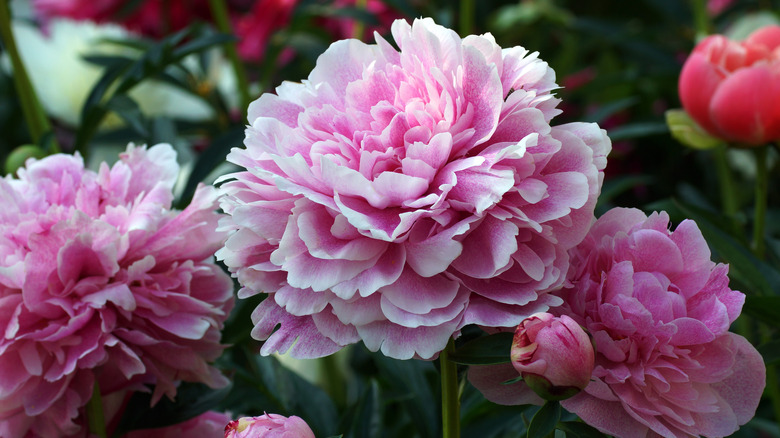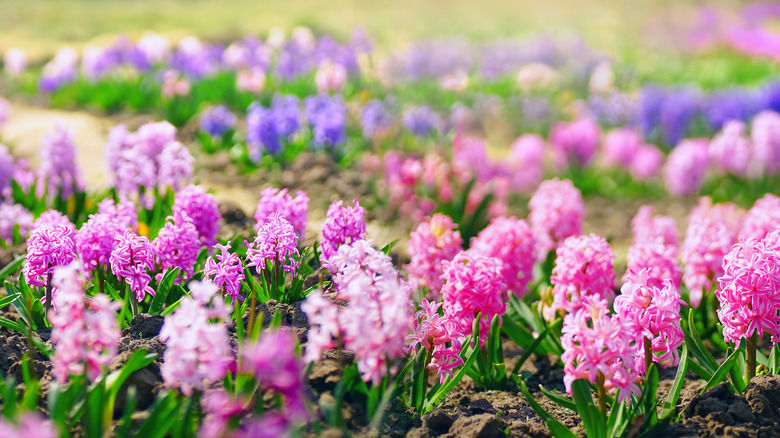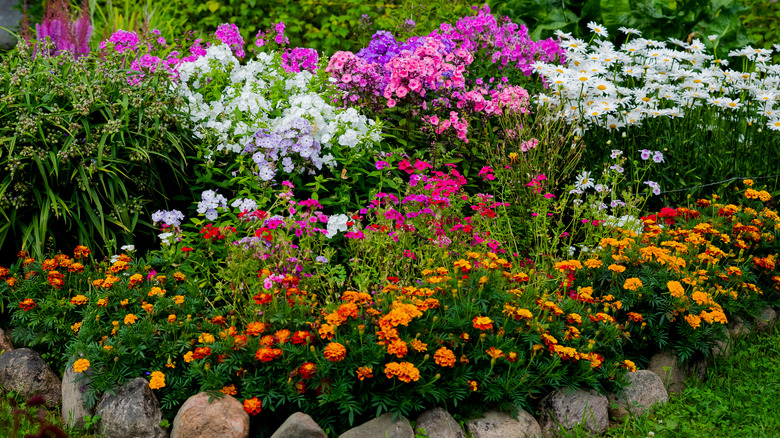Why Do Perennials Take Three Years To Mature?
Whether you're a seasoned gardener or just getting your hands dirty for the first growing season, it's always fun to head to your local garden center, fill the cart with your botanical bounty, and hurry back home to start planting. But, if after a few weeks of planting, your perennials look like they haven't grown at all, don't despair. It's actually quite normal for perennials to take three years to mature and match the luscious vision you had in your mind.
Perennials are named as such because you plant them once, and then they return year after year. Annuals, on the other hand, bloom for one season and then they're finished. If you want an easy punch of vibrant color in your landscape to last all summer long, annuals are the way to go. If you want your garden to have focal points of healthy, mature showstoppers in an array of textures and styles, perennials are your best choice. However, as mentioned above, perennials require patience. The payoff will be worth it in the end, but plan your garden accordingly to allow for three years of maturation.
Before you start planting, make sure your garden tools are in order and you've got the right kind of soil. Different plants bloom at various times during the growing season, so you can plan your color scheme accordingly.
Year One: Sleep
The slow, multi-year growth cycle of perennial plants has been summed up by the gardening community as "sleep, creep, leap." The ultra-popular plant brand, Proven Winners, says that the sleep stage (aka your first year with the perennial) is all about roots. The plant is channeling most of its energy into developing a healthy and strong root system.
This robust root system is crucial to a perennial's ability to survive a winter and come back the following year. Proven Winners explains that a well-developed root system is better equipped to find and absorb water and nutrients. Strong roots also securely hold the plant in place, giving it the strength to thrive. It's easy to get discouraged when you don't see a ton of growth on top of the plant, but take heart and remember that most of the progress is happening deep down in the dirt.
Year Two: Creep
Year two with your perennial plant ushers in the "creep" stage. You'll be thrilled to see growth is happening, albeit slowly. Work continues down in the dirt as the roots expand, growing bigger and stronger. Proven Winners says that gardeners will likely see more flowers and foliage. Why is this important? Leaves act like a plant's engine by soaking up the sunshine to make food and nourish the plant. Hooray for photosynthesis!
Maybe your perennial seems to be sprinting instead of creeping. If that's the case, lucky you! More than likely, you chose a plant from the garden center that already had strong enough roots so it could devote more energy to blooming. As long as you continue to nurture it, you should see an excellent payoff next year.
DIY Network stresses the importance of planting your perennial at the correct time — some fare better planted in the fall, while others do better when planted in the spring. Planting at the wrong time can definitely hinder the plant's sleep, creep, leap progression, or it might not even survive the first year. It's important to read the tags on each plant that you are considering, and don't be afraid to discuss your plan with your garden center so you can make good choices.
Year Three: Leap
Ahh, finally — you've reached the "leap" stage, so get excited! Year three brings the satisfaction of the beautiful blooms and lush foliage that you've been dreaming about for the last two years. Your plant finally looks like the image on the tag at the garden center that suckered you into purchasing it in the first place. Now that the roots are healthy and well-established, your plant can showcase its flower power.
It's important to note that perennial lifespan can differ greatly from plant to plant. Gardeners Supply Company calls out delphinium and lupines as "short-lived" perennials. This means their lifespan is likely only three or four years. Other perennials can have healthy lifespans of 15 years. Amazingly, there are some that can even last an entire lifetime, like peonies. Additionally, some have short bloom times of just a couple of weeks, while others can bloom the entire summer. Once again, before you make the three-year commitment, just make sure to read up on the perennials you want to plant to ensure their bloom time and lifespan fits with your desired garden design.
Once you plan out your perennials and give them proper time to thrive, your gardens can look amazing, and you won't have to keep purchasing plants each year.




